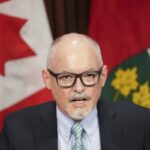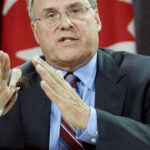The pandemic-induced burnout is real. Just ask Tyrese and Miranda Chen, both 57, who find themselves at a crossroads that many Canadian professionals are facing in 2024: continue pushing through demanding careers or embrace early retirement.
“Some days I walk into the office and wonder if this is it for the next decade of my life,” confesses Tyrese, an engineering manager earning $132,000 annually in Toronto’s competitive tech sector. After 25 years with the same firm, the grinding pace and mounting stress have taken their toll.
Miranda, a healthcare administrator bringing home $98,000 per year, echoes her husband’s sentiments. “The pandemic changed everything. The workload doubled while resources shrank,” she explains during our interview at their modest Scarborough home. “We’re constantly asking ourselves if we can afford to step away now.”
The couple’s financial picture appears solid at first glance. They’ve accumulated approximately $1.2 million in retirement savings, split between RRSPs, TFSAs, and non-registered investments. Their home, purchased for $425,000 in 2003, has appreciated significantly to an estimated $1.3 million. With their mortgage nearly vanquished—just $78,000 remaining—they’re wondering if retirement at 58 is feasible.
According to Janet Wu, a certified financial planner with Toronto-based Horizon Advisors, the answer isn’t straightforward. “Canadian retirement planning in 2024 requires navigating inflation concerns, market volatility, and potential tax changes,” Wu explains. “The Chens are in better shape than many, but several critical factors need alignment before they make this decision.”
Wu’s analysis reveals that with careful planning, the couple could generate approximately $72,000 annually in retirement income (adjusted for inflation)—significantly less than their current combined income of $230,000, but potentially workable with lifestyle adjustments.
This income would come from multiple sources: CPP benefits (which would be reduced by approximately 7.2% for each year they claim before age 65), their investment portfolio using a conservative 4% withdrawal rate, and eventually OAS payments starting at 65.
“Many Toronto-area professionals underestimate longevity risk,” Wu cautions. “With average life expectancies increasing, the Chens need to plan for potentially 30+ years in retirement.” This duration presents challenges, particularly with healthcare costs that typically accelerate in later years.
The couple’s adult children, financially independent but starting families of their own, add another dimension to the equation. “We want to help with potential grandchildren’s education,” Miranda notes. “But not at the expense of our own security.”
Property considerations also factor heavily into their decision. Downsizing could free up significant capital, potentially adding $400,000-$600,000 to their investment portfolio after transaction costs. However, the emotional attachment to their family home makes this a difficult choice.
The latest data from the Financial Planning for Canadians Survey indicates that individuals with professional careers typically need 65-75% of their working income to maintain their lifestyle in retirement. By this metric, the Chens would ideally generate around $150,000 annually—well above their projected $72,000.
“Working even two more years could significantly improve their position,” Wu suggests. “Each additional year allows for more savings, portfolio growth, higher CPP benefits, and fewer years of drawing down assets.”
For professionals experiencing burnout but concerned about finances, Wu recommends exploring alternatives to complete retirement. “Phased retirement, consulting work, or part-time positions can provide mental relief while maintaining income flow,” she advises. “Many employers are increasingly flexible given the tight labor market for experienced professionals.”
The Chens are now considering a compromise: Tyrese might negotiate reduced hours for the next two years, while Miranda explores opportunities in healthcare consulting that would offer more flexibility with comparable compensation.
As Canadian retirement planning evolves in 2024, their situation highlights the complex interplay between financial readiness and quality of life considerations. The mathematical models suggest waiting, but the human factor—their wellbeing—cannot be quantified so easily.
“The numbers tell one story,” Tyrese reflects, “but waking up dreading work every morning tells another. We need to find that middle ground where financial security meets personal fulfillment.”
For the thousands of Canadian professionals contemplating similar decisions this year, the Chens’ journey underscores that retirement planning isn’t merely a financial calculation—it’s about designing the next chapter of life with both prudence and purpose.

























